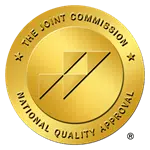Alcohol
Men and women living with a dependence on alcohol have a horribly hard time stopping their drinking on their own. Sometimes life-threatening withdrawal symptoms develop, cravings for more alcohol is constant, and a person will over time experience immense losses, consequences and physical illness. Few alcoholics will be able to stop drinking for more than a few days at a time. Alcohol detox at Encino Detox Center addresses these issues in a safe environment, providing medical care and psychological support as needed to assist our client’s through the first – and most difficult – days following the stopping of drinking. Detox is only the first step in a comprehensive alcohol addiction treatment program and should not be considered the final stop in treatment.
Illicit Drugs
Illicit or illegal drugs refer to drugs that are not prescribed by a licensed medical professional and are synthesized, distributed, and obtained through illegal means. They are typically manufactured in underground laboratories without supervision and regulation from the government. The most common illicit drugs worldwide are: Cocaine, Meth, Heroin, Crack, Ecstasy
Opiates
Heroin: is a semi-synthetic derivative of an opioid made from the resin of the opium poppy plant. It is a white or black powder or paste that is smoked, injected intravenously. Heroin binds to opioid receptors in the brain and the spinal cord. Because heroin acts similarly with other opioids, it can also produce analgesic effects, which make heroin prone to be a drug of abuse. Much like other recreational drugs, heroin has the ability to bring about feelings of euphoria and intense pleasure very quickly.
Fentanyl: illegally used fentanyl most often associated with recent overdoses is made in labs. This synthetic fentanyl is sold illegally as a powder, dropped onto blotter paper, put in eye droppers and nasal sprays or made into pills that look like other prescription pills. Like heroin, morphine, and other opioid drugs, fentanyl works by binding to the body’s opioid receptors, which are found in areas of the brain that control pain and emotions. After taking opioids like Fentanyl, the brain quickly adapts to the drug, diminishing the brains sensitivity, making it hard to feel pleasure from anything, besides the drug. When people become addicted, drug seeking, and drug use over time ends in two main ways, it destroys lives and it kills.
Benzodiazepines
Benzodiazepines are a class of medications that work in the central nervous system and are used for a variety of medical conditions, such as anxiety, seizures, and for alcohol withdrawal. Benzodiazepines appear to work by blocking excessive activity of nerves in the brain and other areas in the central nervous system. As a class, benzodiazepines are similar in how they work in the brain but have different potencies and durations of actions. Because of this, some benzodiazepines work better than others in the treatment of particular conditions. Common examples of benzodiazepines include alprazolam (Xanax), diazepam (Valium) and lorazepam (Ativan).
Benzodiazepines are commonly abused. This abuse is partially related to the toxic effects that they produce and also to their widespread availability. They can be chronically abused or, as seen more commonly in hospital emergency departments, intentionally or accidentally taken in overdose. Death and serious illness rarely result from benzodiazepine abuse alone; however, they are frequently taken with either alcohol or other medications. The combination of benzodiazepines and alcohol can be dangerous — and even lethal.
Stimulants
Methamphetamine is a psychostimulant often abused for the euphoric “high” it provides. Some signs of abuse include frequent paranoia, agitation, sweating, insomnia, skin changes, weight loss and more. Abusing this powerfully addictive drug can have deadly consequences. Stimulant dependencies rank amongst the most difficult to overcome. Frequently, treatment is needed to help someone stop using. Meth use can lead to many detrimental physical and mental effects over time. Some of the most common long-term side effects of methamphetamine abuse include:
· Damage to brain cells (neurotoxicity).
· Paranoia, anxiety, and insomnia.
· Deterioration of teeth (meth mouth).
· Sores and infections on the skin.
· Strokes.
· Cardiovascular disease.
· Liver, lung, and kidney damage.
· Birth defects when used by women during pregnancy.
· Hallucinations and psychosis due to sleep deprivation.
· Death.
Encino Detox Center provides an effective, safe and medically assisted treatment program for methamphetamine abuse. Our doctors and clinicians are trained and highly experienced with this drug of abuse and how to effectively help a person detox and recover.


















